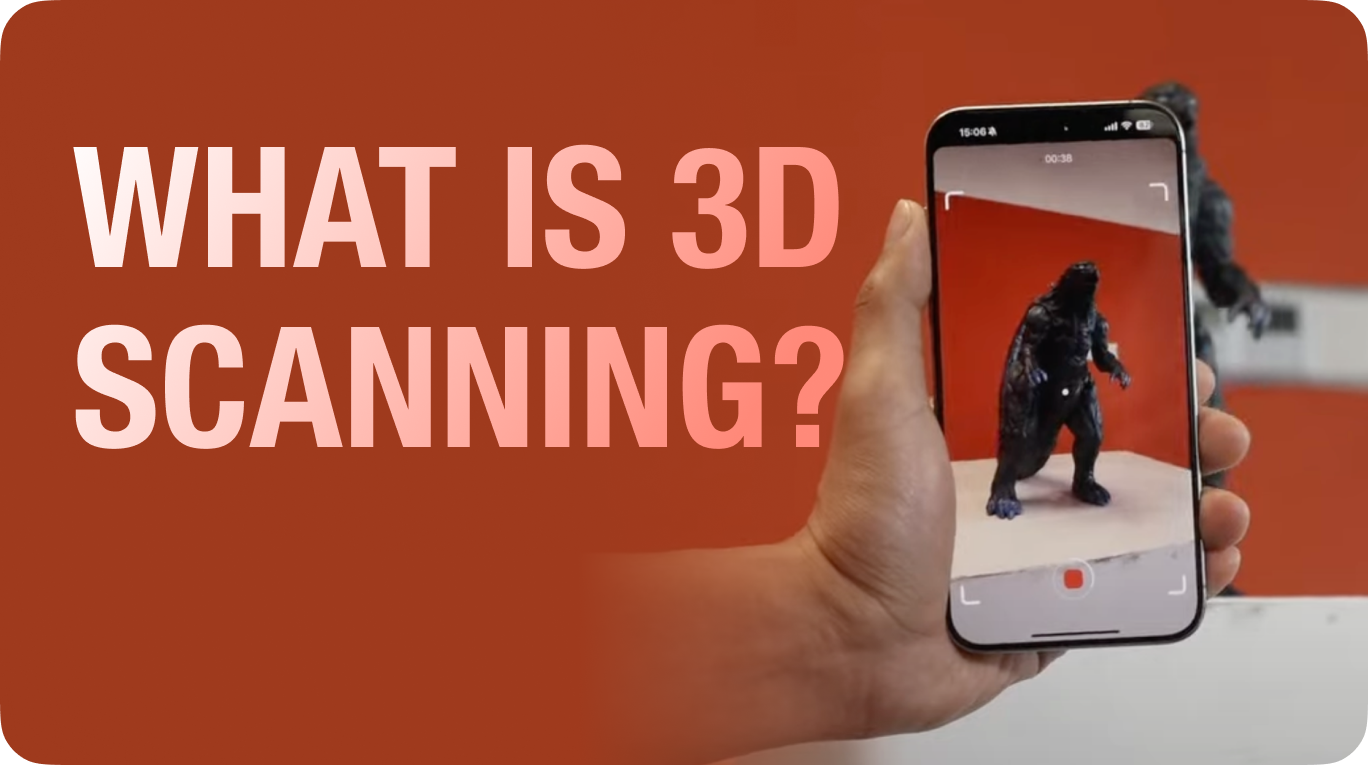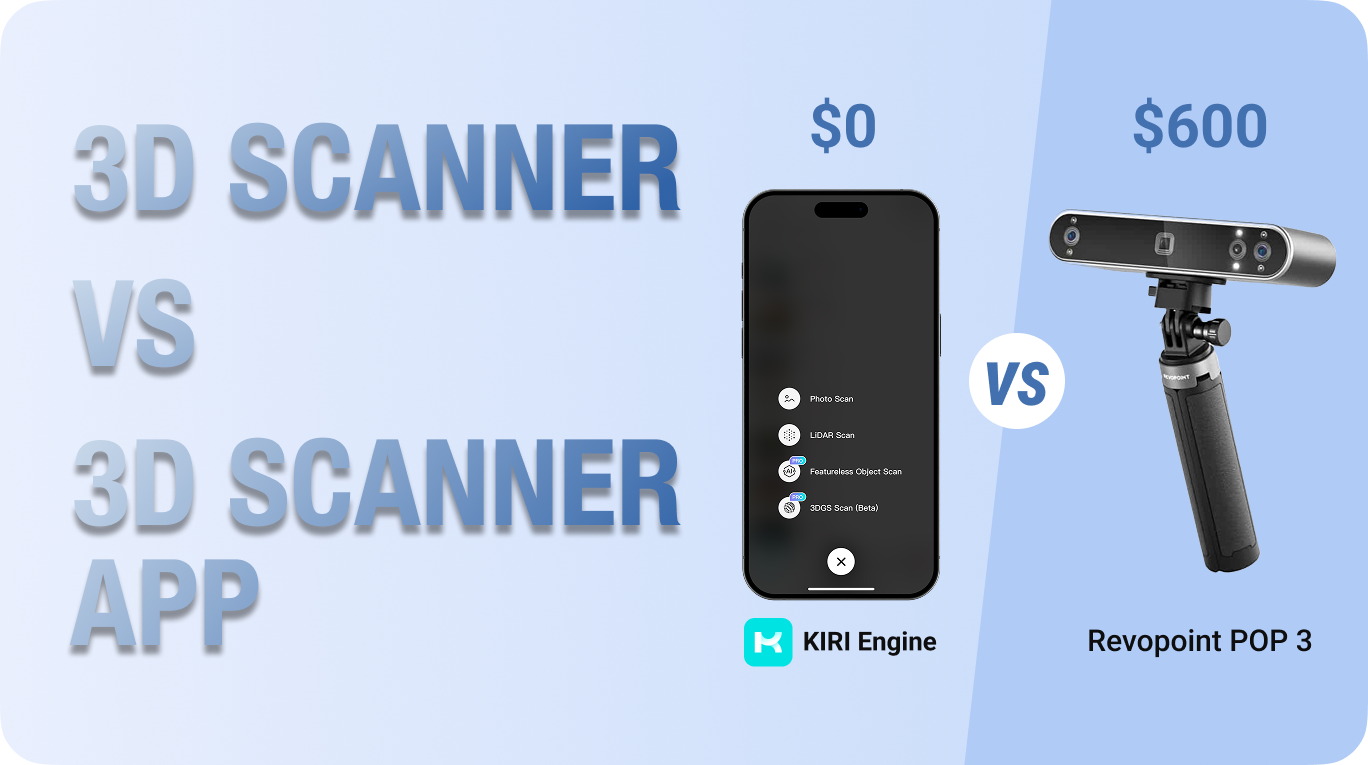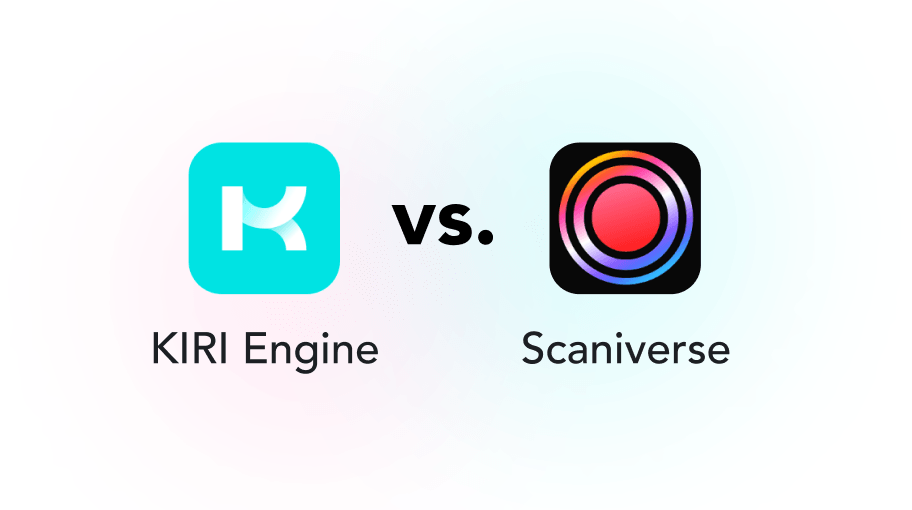Press Release: KIRI Engine Pushes Two Major Updates in One Week
KIRI Engine rolls out two game-changing updates in one week, enhancing both accessibility and advanced features. From improved scan quality to new LiDAR capture modes, these updates push the boundaries of 3D scanning.
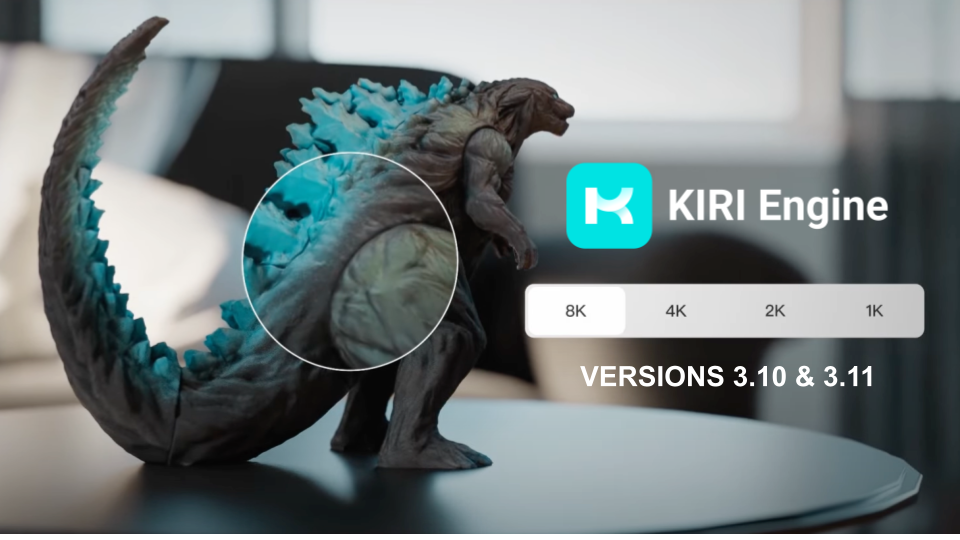 Figure 1: Cover
Figure 1: Cover
Constantly evolving, as stated in KIRI Engine's social media bio, is quite an understatement for what the app has accomplished in the second week of September.
Released in the same week, versions 3.10 and 3.11 both bring significant updates to the KIRI Engine App, focusing on quality-of-life changes as well as additional maneuverability to existing industry-leading features.
So, what are these updates and how can they aid 3D creators' workflows? Let's take a look.
Version 3.10
As mentioned earlier, the major quality-of-life updates are brought forth in version 3.10. While the changes may drastically reduce an experienced 3D scanning enthusiast's workload, these changes completely revolutionize the entry barrier for any 3D creator looking to delve into 3D scanning.
Third-Party Login
KIRI Engine now allows users to create accounts directly with their Google account or Apple ID. (Note: existing users who have used email addresses linked to their Google account/Apple ID will not be able to re-register)
Camera Switching
Users can now switch camera lenses when capturing 3D scans. This quality-of-life change can help scenarios such as being too far from the object or when in need of extreme details.
Rating System
The new version allows users to provide direct feedback on their generated models, which helps KIRI to understand better what works and what doesn't. (Much appreciated :D)
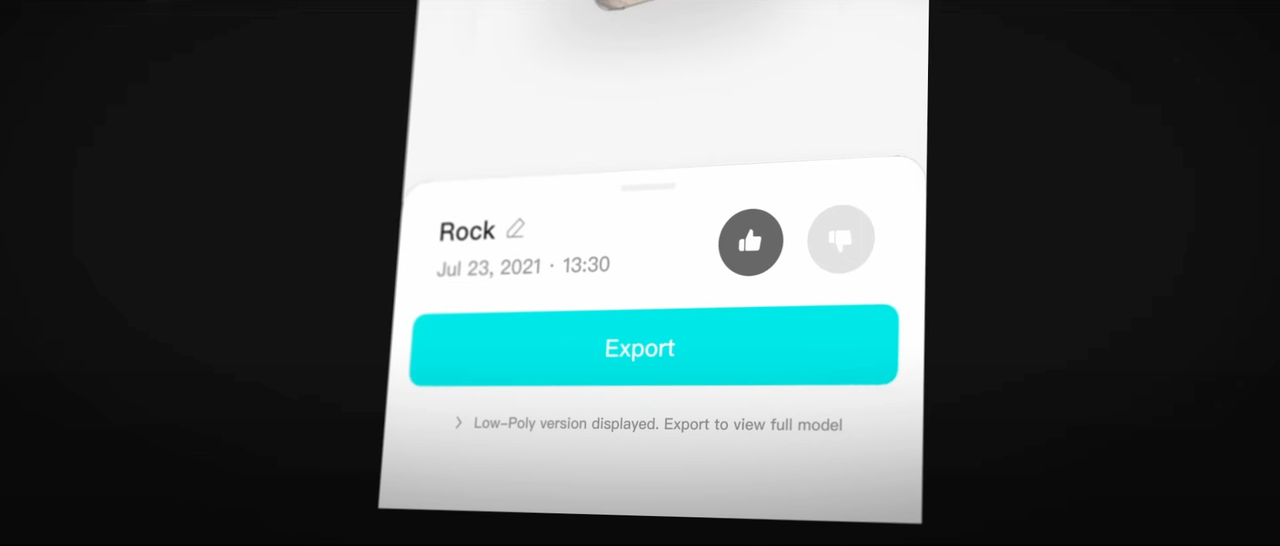 Figure 2: Rating System
Figure 2: Rating System
Increased Time Limit for Featureless Object Scan and 3DGS
The time limit for both of these scanning methods has been increased from 2 minutes to 3 minutes. This allows for more details to be captured, and more importantly, users are highly recommended to take advantage of this change to capture from more angles to ensure comprehensive coverage.
 Figure 3: Increased Video Length for Featureless Object Scan and 3DGS
Figure 3: Increased Video Length for Featureless Object Scan and 3DGS
8K Texture
In a rapidly progressing 3D industry, the demand for more detailed textures has respectively increased. The pre-existing 4K texture export, while sufficient, is shy of the highest quality. Therefore, with tweaks and optimizations in the algorithms, KIRI introduces 8K texture exports for those who demand more. (Available on KIRI Engine Pro)
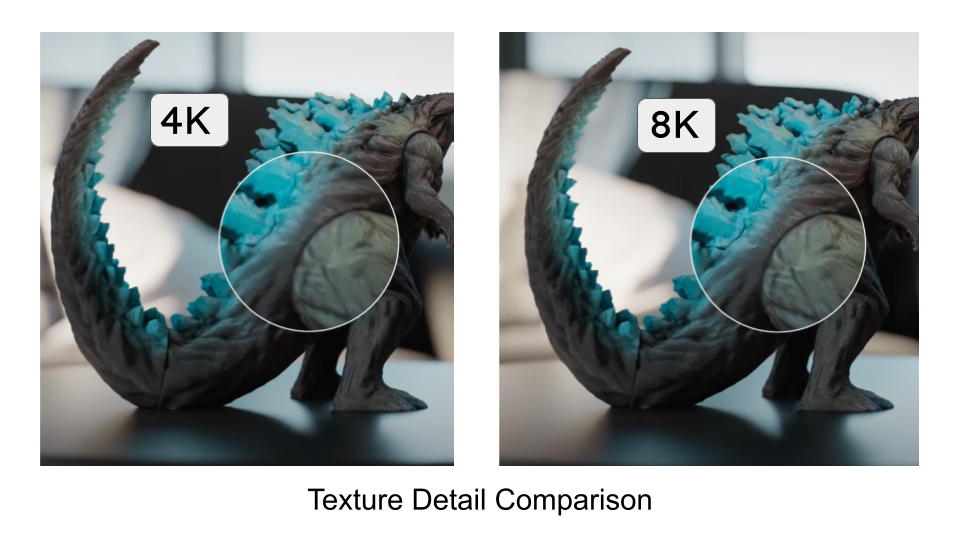 Figure 4: Texture Comparison
Figure 4: Texture Comparison
Texture Smoothing
Ever encountered the issue with the surface of the model having very sharp textures in one area but extremely blurry textures in another? This is often due to the input photo set having somewhat blurry images, or that certain features in the pictures are out of focus yet still serviceable. With this type of input, the algorithm will proceed to construct the model just fine, but possibly with blurry sections.
Texture smoothing is an advanced algorithm that aims to standardize the texture consistency in the output files. Drastically reducing the chances of generating high-contrasting surface details, this method, when turned on upon initial upload, will output uniform texture in the final results. (Available on KIRI Engine Pro)
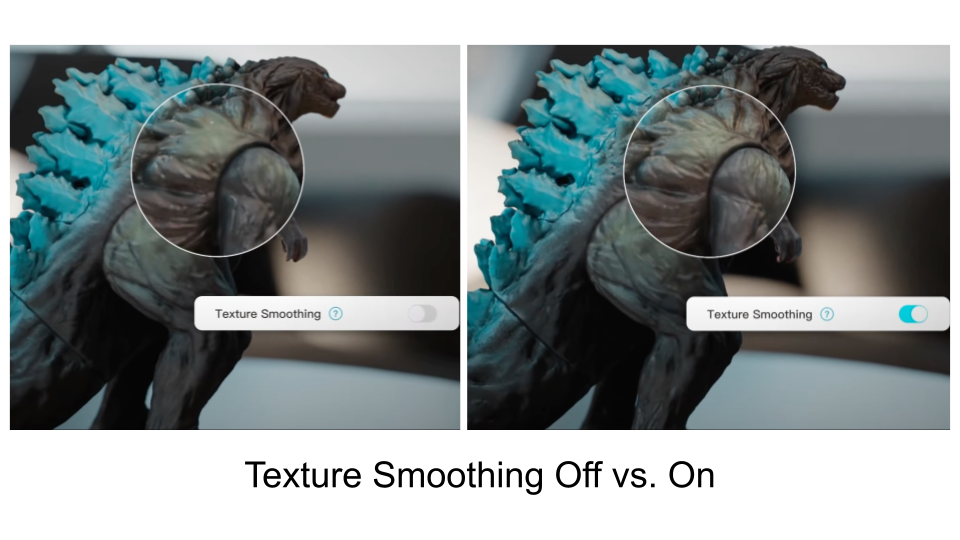 Figure 5: Texture Smoothing Comparison
Figure 5: Texture Smoothing Comparison
Post-Cropping Texture Retopology
When you edit a 3D scan file such as changing the surface and point structure of the model, the textures will consequently be scattered all over the place. The new update allows for textures to be rebaked onto the edited mesh and will export the model with UV-accurate textures. (Available on KIRI Engine Pro)
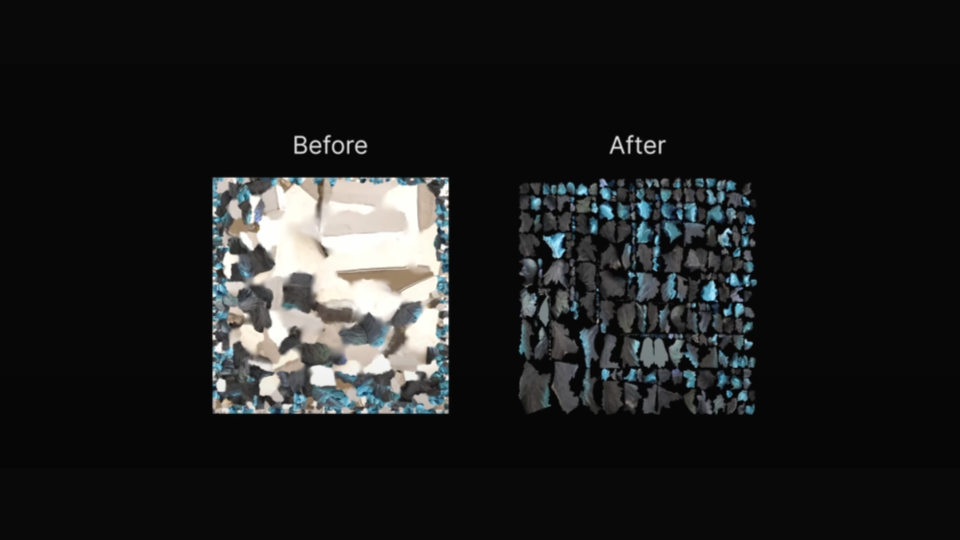 Figure 6: Texture Re-Bake
Figure 6: Texture Re-Bake
Version 3.11 (iOS Update)
You're likely wondering why we would push two separate updates instead of cramming them into one major update. This is because KIRI Engine version 3.11 is groundbreaking, but only for LiDAR-equipped iOS devices.
The Object Capture feature is now more capable and versatile than ever, as it features two different advanced capturing methods: Object Mode and Area Mode. Oh, and they're both free to use.
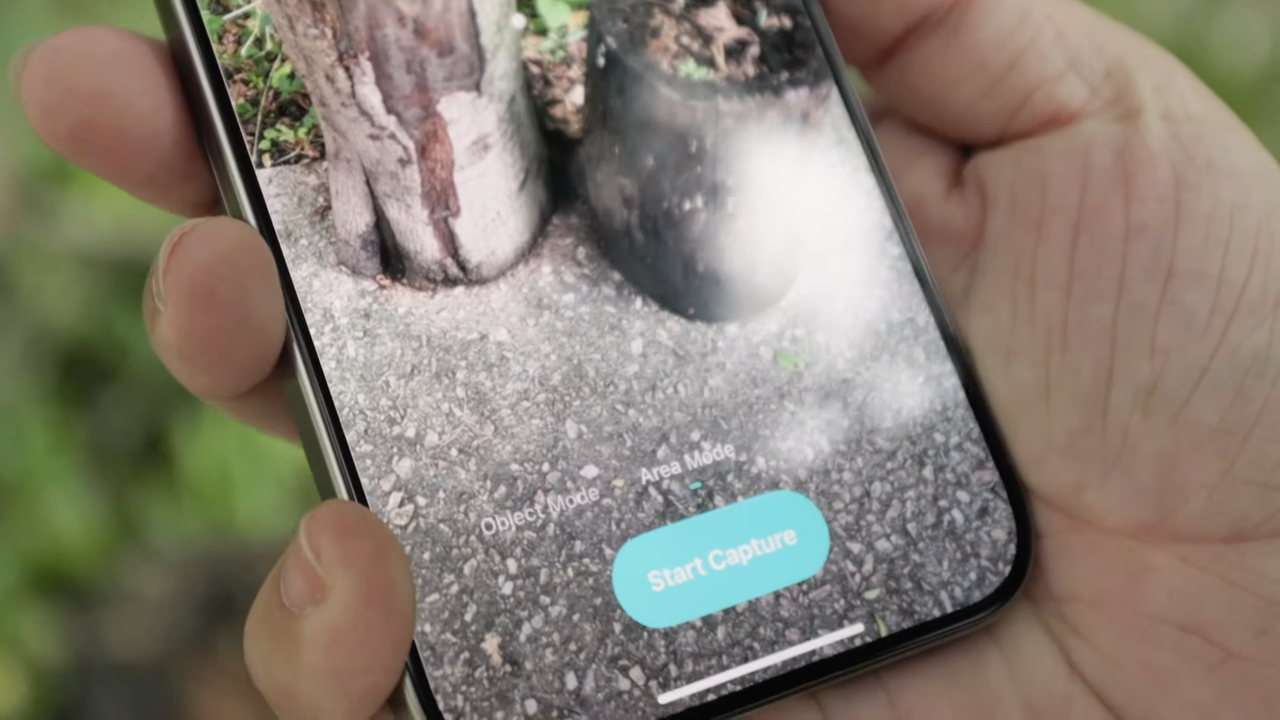 Figure 7: Choosing Between Object Mode and Area Mode in Object Capture
Figure 7: Choosing Between Object Mode and Area Mode in Object Capture
Object Mode
With advantages such as local processing and real-world scaling. Object Capture's Object Mode has been a tried and true method for users to create accurate models of objects quickly and efficiently. This particular method has been available on KIRI Engine since the release of iOS 17.
Object Mode allows users to obtain full meshes and is perfect for obtaining individual models. Capturing in this method requires coverage from all angles, specifically 360 degrees around the object.
Area Mode
With version KIRI Engine 3.11 and updating to iOS 18, users can now capture entire areas into a 3D mesh. The LiDAR Object Capture is no longer limited to orbiting around a specific object. With the same inherent processing of photogrammetry in combination with LiDAR sensors, Area Mode allows the reconstruction of spatial structures into mesh-based geometries.
The previous closest scanning method to Area Mode was Scene Scan, which only uses LiDAR data and no photogrammetry, requiring less input and resulting in a faster generation. However, the results are night and day compared to Object Capture Area Mode.
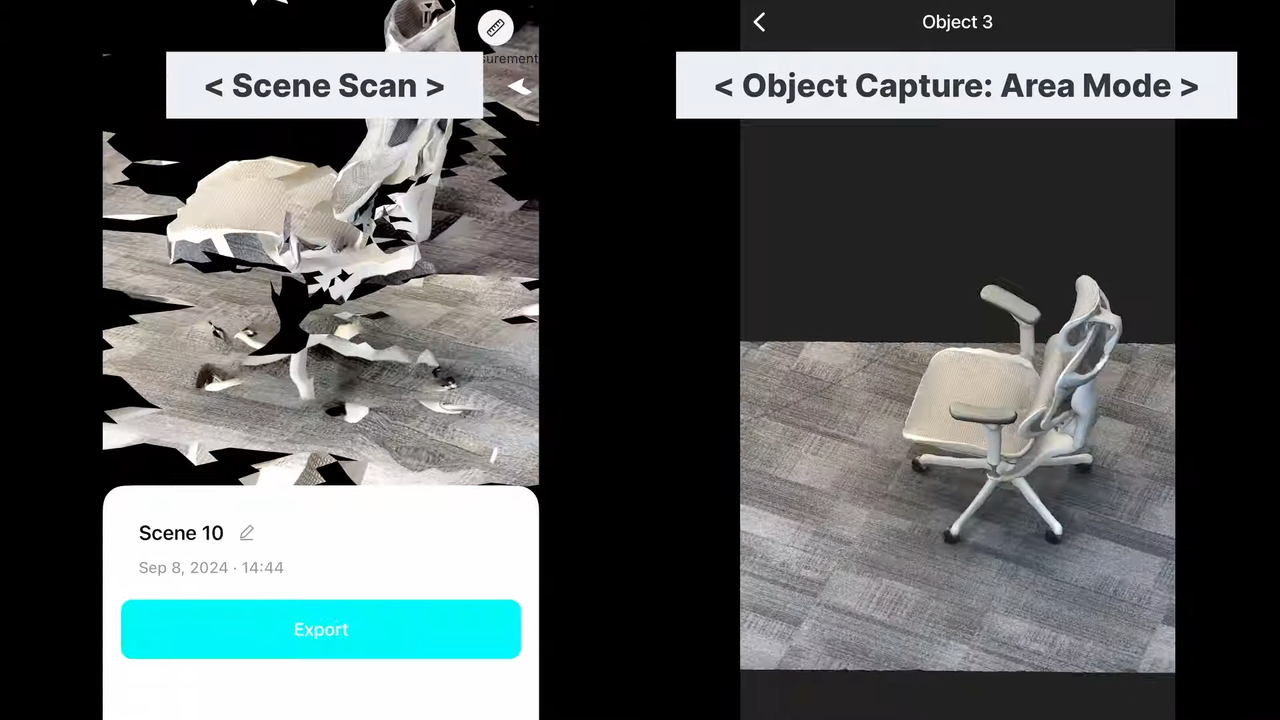 Figure 8: LiDAR Scene Scan vs. Object Capture Area Mode
Figure 8: LiDAR Scene Scan vs. Object Capture Area Mode
Object Capture Upload
Object Capture is essentially an API integrated directly from Apple, which means its limitations are largely predetermined. KIRI Engine possesses many advanced capabilities that remained completely separate from the LiDAR captures until version 3.11.
In the new update, captures of both Object Mode and Area Mode can be uploaded to the KIRI Engine Cloud server for advanced processing. This allows for two things: cloud storage and Advanced Export.
In the past, all LiDAR captures were processed and stored locally on the iOS device itself, and deleting the app also meant that the LiDAR-captured models would be erased. KIRI Engine 3.11 allows these models to be uploaded onto the online server, enabling cloud storage and making the files accessible from all platforms. Once up on the cloud, these models will unlock advanced export features such as Quad-Mesh Retopology and PBR Texture generation. (Available on KIRI Engine Pro)
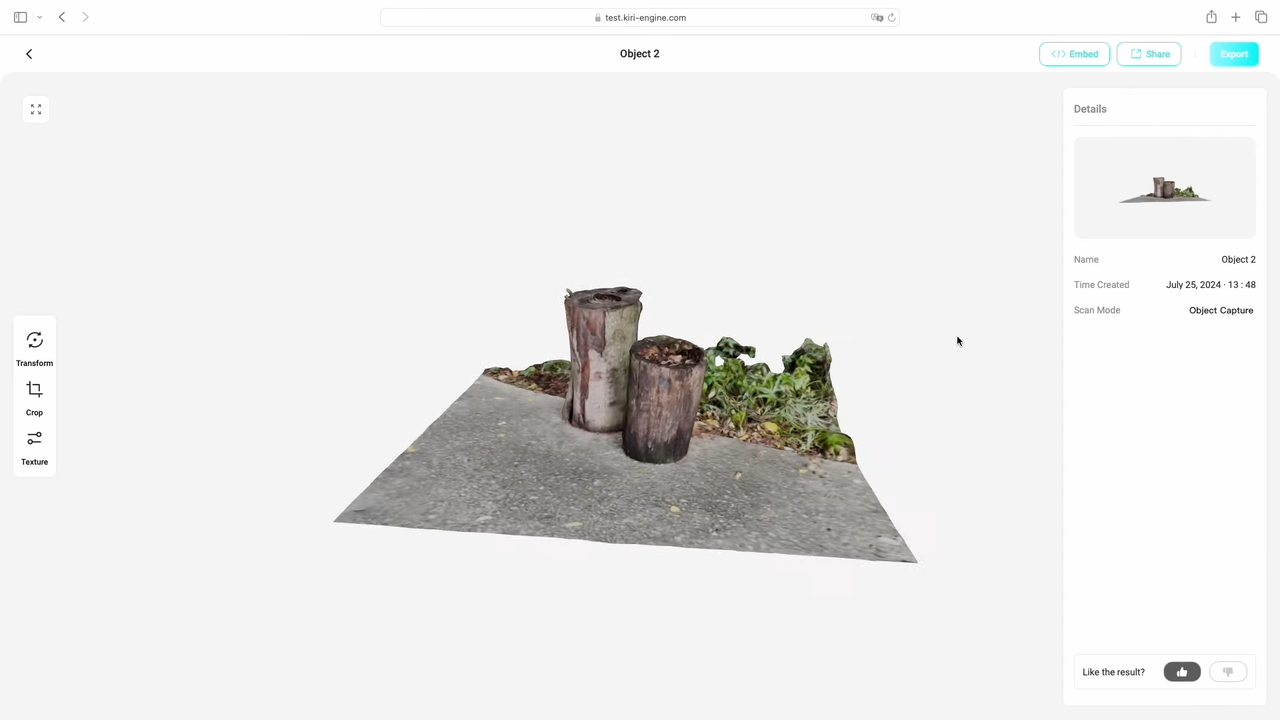 Figure 9: Accessing Advanced Features for Object Capture Online
Figure 9: Accessing Advanced Features for Object Capture Online
TL;DR
This was the first time KIRI Engine has pushed for two updates in a single week, both serving their unique advantages to KIRI's users. These joint updates not only allow the app to be more beginner-friendly, but also elevate the ceiling for experienced users who demand more.
If you own a LiDAR-equipped iOS device, go ahead and download KIRI Engine to test the new updated Object Capture scanning methods. If not, the quality-of-life changes will regardless make your experience starting on the app more effortless than ever.
Check out these videos if you prefer to watch videos instead of reading. :p
Version 3.10: https://www.youtube.com/watch?v=ieoKm_49iLo
Version 3.11: https://www.youtube.com/watch?v=wyhDffq1_SA
To find out more, visit us at https://www.kiriengine.app/
Join other KIRI Engine users on our Discord
Follow KIRI Engine on Instagram
Follow KIRI Engine on Twitter/X
Try KIRI Engine now for free:
Download KIRI Engine on Google Play Store: https://play.google.com/store/apps/details?id=com.kiriengine.app
Download KIRI Engine on App Store: https://apps.apple.com/us/app/kiri-engine-3d-scanner-lidar/id1577127142
KIRI Engine WEB Version: https://www.kiriengine.app/web-version/
